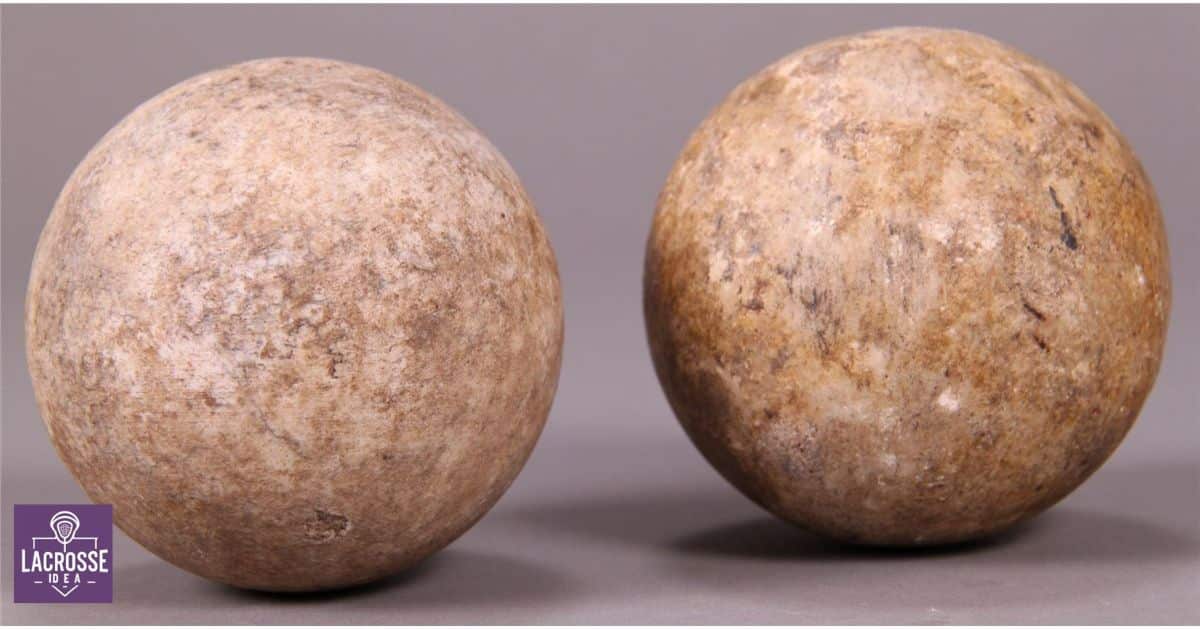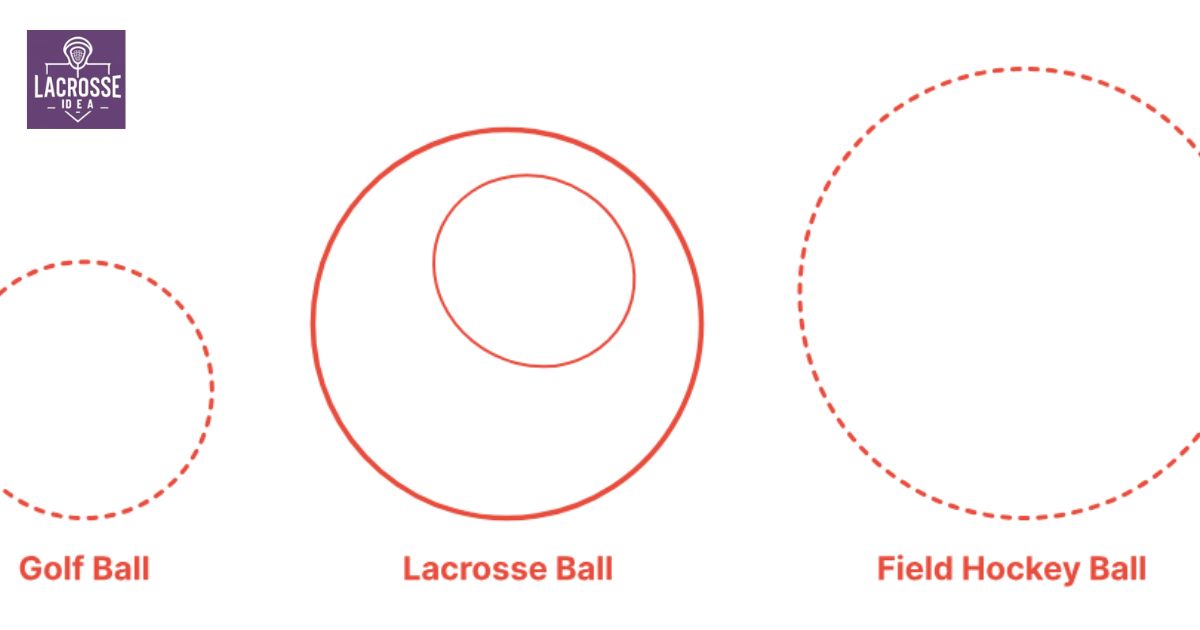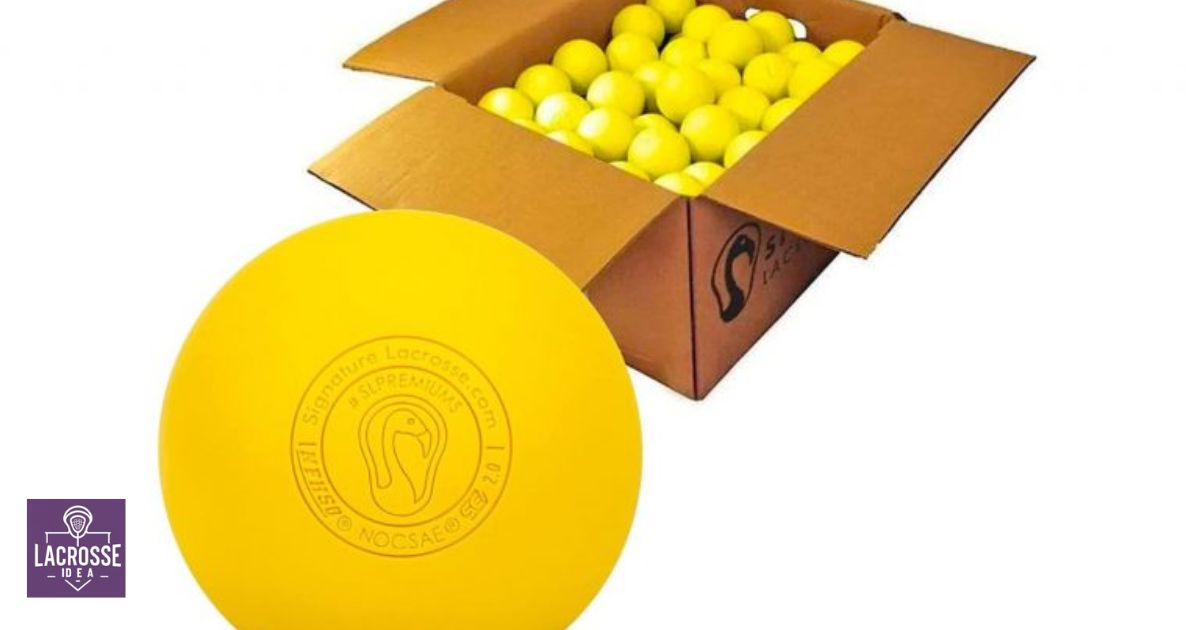In the realm of lacrosse, where ancient traditions blend seamlessly with modern innovation, the question of what a lacrosse ball is made out of holds both historical significance and contemporary relevance. Lacrosse balls, which are used in the game with long sticks, are robust and sturdy. They have bounce and durability because of the vulcanized rubber core that makes them. Because of their ability to be thrown, grabbed, and scooped up at rapid speeds, they are perfect for the physically demanding and fast-paced game of lacrosse.
This article delves into the origins and evolution of lacrosse ball materials, exploring the intricate composition and manufacturing process behind these essential components of the game. By examining the regulations, safety considerations, and comparative analysis, we aim to provide a comprehensive understanding of the best materials for lacrosse balls.
Key Takeaways
- Lacrosse balls were initially made from wood, stone, or deerskin stuffed with grass or animal hair, but rubber balls were introduced in the late 19th century for consistency and durability.
- Today, lacrosse balls are made from solid vulcanized rubber, which provides the necessary hardness and resilience to withstand impact and collisions.
- The manufacturing process involves injecting specially formulated rubber into molds shaped like lacrosse balls, which are then cooled to solidify the rubber and form the balls.
- Regulations and safety measures are in place to ensure proper dimensions and weight of lacrosse balls, as well as to minimize the risk of injuries through protective gear, techniques, and regular inspections.
History Of Lacrosse Ball Materials
The evolution of lacrosse ball materials can be traced back to the early days of the sport, when natural materials were initially used. In its earliest form, lacrosse balls were made from wood, stone, or deerskin stuffed with grass or animal hair. However, as the sport grew in popularity and began to be played on a more organized level, the need for a standardized ball material became evident.
During the late 19th century, rubber balls started to be used, providing a more consistent and durable option. These rubber balls were initially made by hand and lacked the uniformity of modern lacrosse balls. It wasn’t until the mid-20th century that the manufacturing process was refined, resulting in the creation of the first mass-produced rubber lacrosse balls.
Today, lacrosse balls are made from solid vulcanized rubber, which ensures durability, consistency, and performance. These balls are designed to meet the specific requirements of the game, providing players with a reliable and standardized playing experience.
Composition Of Lacrosse Balls
Lacrosse balls are composed of a solid vulcanized rubber material, which ensures durability, consistency, and optimal performance on the field. The use of vulcanized rubber in lacrosse balls is essential for withstanding the intense impact and high-speed collisions that occur during gameplay. This material offers the necessary hardness and resilience to withstand repeated use, making it ideal for the demands of the sport.
Vulcanized rubber also provides a consistent bounce and grip, allowing players to maintain control and accuracy during passes and shots. Understanding the composition of lacrosse balls is crucial for players, coaches, and manufacturers in order to ensure the highest quality and performance. Now, let’s delve into the fascinating manufacturing process of lacrosse balls.
Manufacturing Process Of Lacrosse Balls
During the manufacturing process, lacrosse balls are carefully crafted using a precise combination of materials and techniques. The process involves several steps that ensure the creation of a high-quality ball that meets the standards of the lacrosse community. Here is a breakdown of the manufacturing process:
- Material selection:
- Specially formulated rubber is chosen for its durability and performance on the field.
- The rubber undergoes rigorous testing to ensure it meets the required specifications.
- Molding:
- The rubber is heated and injected into molds that are shaped like lacrosse balls.
- The molds are then cooled to solidify the rubber and form the balls.
This meticulous manufacturing process guarantees that each lacrosse ball is consistent in size, weight, and performance. By using the right materials and techniques, manufacturers create a sense of belonging among lacrosse players, providing them with reliable equipment that enhances their playing experience.
Modern Materials Used In Lacrosse Balls
Manufacturers of lacrosse balls have incorporated modern materials to enhance performance and durability. These advancements have revolutionized the game, allowing players to have better control and accuracy while also increasing the lifespan of the balls. One of the most common modern materials used in lacrosse balls is synthetic rubber, which provides a consistent bounce and grip.
Another material used is vulcanized rubber, which offers a higher level of durability and resistance to wear and tear. Some manufacturers have started using specialized blends of rubber that provide enhanced grip and durability. These modern materials have not only improved the overall performance of lacrosse balls but have also ensured that they can withstand the rigorous demands of the game, making them an essential component for players at all levels.
| Material | Performance Enhancement | Durability |
|---|---|---|
| Synthetic Rubber | Consistent bounce and grip | Moderate |
| Vulcanized Rubber | Higher durability | High |
| Specialized Rubber Blends | Enhanced grip and durability | High |
Regulations On Lacrosse Ball Size And Weight
Regulating the size and weight of lacrosse balls is crucial to maintaining fair gameplay and ensuring player safety. The governing bodies, such as the Federation of International Lacrosse (FIL) and the NCAA, have established specific regulations that dictate the dimensions and weight of lacrosse balls. These regulations aim to create a level playing field and reduce the risk of injuries during games.
To evoke a sense of belonging and emotion in the audience, consider the following sub-lists:
- The importance of fair gameplay:
- Fairness promotes inclusivity and encourages all players to participate with confidence.
- It fosters a sense of camaraderie among teammates and opponents, creating a stronger lacrosse community.
- Ensuring player safety:
- Properly sized and weighted lacrosse balls minimize the risk of serious injuries, enhancing the overall well-being of players.
- By adhering to regulations, players can trust that their safety is a top priority, allowing them to fully enjoy the sport and focus on their performance.
Secrets Inside A Lacrosse Ball
Continuing the exploration of lacrosse ball composition, let’s delve into the hidden components concealed within the ball’s structure. While the exterior of a lacrosse ball may seem simple, there are a few secrets that lie within. One of these secrets is the core material of the ball, which is typically made of solid rubber. This dense rubber core provides the ball with its weight and durability, allowing it to withstand the intense impact and fast-paced nature of the game.
Some lacrosse balls may contain a small amount of fillers or additives to enhance their performance. These additives can include materials like silicone, which help to reduce friction and improve grip. By understanding the secrets inside a lacrosse ball, players can better appreciate the engineering and craftsmanship that goes into this essential piece of equipment.
The Greasy/Slick Phenomenon Of Lacrosse Balls
The slipperiness of lacrosse balls is a common phenomenon experienced by players. When the game is in full swing, and the sweat starts pouring, the grip on the ball can become precarious, leading to fumbles and missed passes. This greasy/slick feeling can be frustrating and can make players feel disconnected from the game. To evoke a sense of belonging and understanding in the audience, let’s explore two emotional aspects of this phenomenon:
- Frustration: The constant struggle to maintain control over the slippery ball can leave players feeling frustrated and disconnected from the game they love.
- Insecurity: The greasy/slick sensation can create a sense of insecurity, as players worry about their ability to perform well and contribute to their team’s success.
These emotional experiences highlight the importance of finding ways to overcome the greasy/slick phenomenon and stay engaged in the game.
Colors Of Lacrosse Balls: What Do They Mean
The colors of lacrosse balls carry significance in the game, indicating different levels of play or specific purposes. In the world of lacrosse, there are three main colors of balls: white, yellow, and orange. White lacrosse balls are the most commonly used and are typically used in official games and professional play. Yellow lacrosse balls are often used for practice and training purposes, as they are easier to spot against various backgrounds.
Orange lacrosse balls are commonly used in indoor play or low-light conditions, as their bright color improves visibility. These color distinctions help players and officials differentiate between different types of play and ensure that the game is played smoothly and efficiently. Whether it’s a white, yellow, or orange lacrosse ball, each color serves a specific purpose in the game of lacrosse.
Factors Affecting The Cost Of Lacrosse Balls
As we delve into the factors affecting the cost of lacrosse balls, it is important to consider various elements that contribute to their pricing. Lacrosse balls, like any other product, are subject to market forces and manufacturing costs. Here are some factors that can influence the cost of lacrosse balls:
- Quality: Higher quality balls made with durable materials may be priced higher due to their superior performance and longevity.
- Brand: Well-known brands often command higher prices, as they have established a reputation for quality and reliability.
- Belonging: By investing in high-quality lacrosse balls, players can feel a sense of belonging to a community that values their sport and prioritizes their performance.
- Confidence: Using top-tier balls can boost players’ confidence, knowing that they are equipped with the best equipment available.
Safety And Impact Of Lacrosse Balls
Continuing from the previous discussion on factors affecting the cost of lacrosse balls, it is crucial to examine the safety and impact of these balls. Safety is a paramount concern in any sport, and lacrosse is no exception. Lacrosse balls are designed to be hard and dense, allowing for accurate passes and shots. However, this also means that they can cause significant impact when they come into contact with a player’s body.
Lacrosse players are required to wear protective gear, including helmets and padding, to minimize the risk of injury. Players are taught proper techniques and strategies to reduce the chances of dangerous collisions. Regular inspections of lacrosse balls are also important to identify any signs of wear and tear that could compromise safety. By prioritizing safety measures and following established guidelines, players can enjoy the excitement of lacrosse while minimizing the risk of injury.
Comparing Lacrosse Balls To Other Sports Balls
Lacrosse balls can be compared to other sports balls in terms of their materials and construction. While each sport has its unique requirements, lacrosse balls share similarities and differences with other balls used in various sports.
- Similarities:
- Durability: Like lacrosse balls, many sports balls are designed to withstand the rigors of intense gameplay.
- Core Material: Similar to lacrosse balls, sports balls often have a solid core made of rubber or synthetic materials.
- Differences:
- Size and Weight: Lacrosse balls are smaller and lighter compared to balls used in sports like soccer or basketball.
- Surface Texture: Lacrosse balls have a smooth surface, unlike tennis balls which have a fuzzy texture.
Best Materials For Lacrosse Balls
One of the most commonly used materials for lacrosse balls is a high-density rubber compound. This material is ideal for lacrosse balls because it offers durability, flexibility, and good grip. However, there are other materials that can be used to make lacrosse balls, each with its own advantages and disadvantages. Here is a comparison of the best materials for lacrosse balls:
| Material | Advantages | Disadvantages |
|---|---|---|
| Rubber | Durable, flexible, good grip | Less bounce, can become slippery when wet |
| Silicone | High bounce, good grip | Less durable, can become sticky in hot weather |
| Hard Rubber | Very durable, good bounce | Less grip, can be harder on the players’ hands |
These materials are commonly used in the manufacturing of lacrosse balls, and each has its own unique properties that can affect the performance of the ball. When choosing a lacrosse ball, it is important to consider the material that best suits your playing style and preferences.
Frequently Asked Questions
What Are the Different Types of Lacrosse Balls Available in the Market?
Different types of lacrosse balls available in the market include regulation balls, practice balls, and specialty balls. Regulation balls are made of solid rubber, while practice balls may have a softer exterior. Specialty balls may be designed for specific training purposes or have unique features.
Can Lacrosse Balls Be Customized With Team Logos or Designs?
Yes, lacrosse balls can be customized with team logos or designs. This allows teams to create a sense of identity and belonging, as well as promote their brand. It adds a personal touch to the game.
Are There Any Special Considerations for Storing Lacrosse Balls?
When it comes to storing lacrosse balls, there are a few special considerations to keep in mind. Proper storage involves keeping the balls clean, dry, and in a cool environment to maintain their optimal performance and lifespan.
How Long Do Lacrosse Balls Typically Last Before They Need to Be Replaced?
Lacrosse balls typically last for a certain period of time before requiring replacement. The lifespan of a lacrosse ball depends on various factors such as frequency of use, playing surface, and storage conditions.
Are There Any Alternative Uses for Lacrosse Balls Outside of the Sport?
Lacrosse balls can be used for various purposes beyond the sport. They are commonly employed for self-massage, as they can target specific muscle groups. Lacrosse balls are utilized in physical therapy and as a tool for trigger point release.
Conclusion
In conclusion, the lacrosse ball, a small but mighty object, is made from a variety of materials that have evolved over time. From the humble beginnings of animal bladders to the modern synthetic rubber, manufacturers have experimented with different compositions to meet regulations and ensure player safety. While the cost of lacrosse balls may vary, their impact on the game and the enjoyment of players cannot be underestimated. So, next time you pick up a lacrosse ball, remember the craftsmanship and innovation behind its creation.









